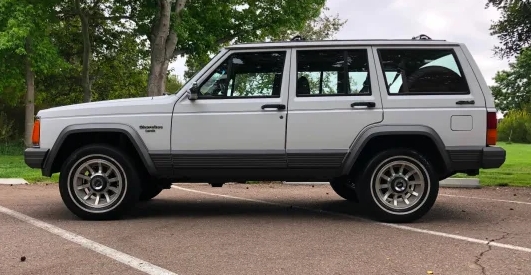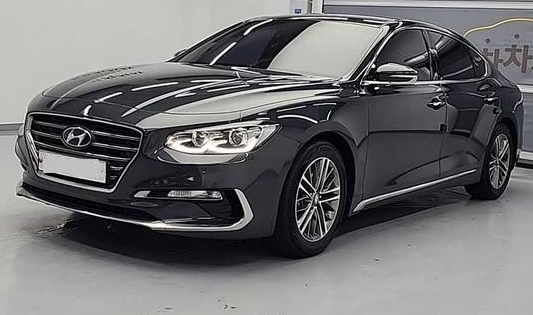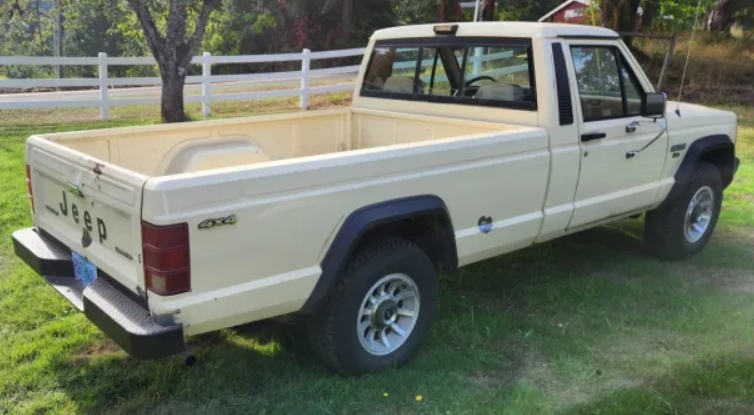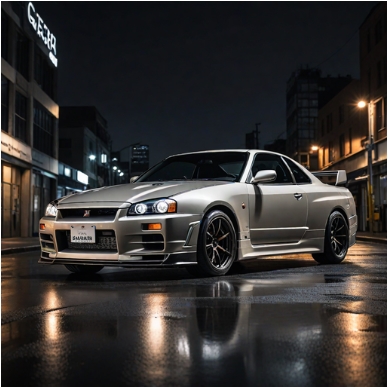The Ascending Star: Tracing the Evolution of the Honda Domani
The automotive landscape is a tapestry woven with countless models, each with its own story of inception, refinement, and eventual departure. Among these, some cars carve out a niche that resonates deeply within specific markets, becoming emblems of an era or a brand’s strategic ambition. The Honda Domani, though perhaps not a global household name like the Civic or Accord, represents a fascinating chapter in Honda’s history, particularly within the Japanese domestic market (JDM). Designed to bridge the gap between the compact Civic and the more executive Accord, the Domani offered a compelling blend of style, practicality, and Honda’s signature engineering prowess. Its evolution, spanning just over a decade, showcases Honda’s adaptive approach to consumer needs and changing market trends.
Genesis: The First Generation (1992-1997) – A Bridge Between Worlds
The Honda Domani first graced the automotive stage in 1992, arriving as a four-door sedan that aimed to inject a dose of sportiness and sophistication into Honda’s compact offerings. It was positioned as a more upscale alternative to the Civic, offering a slightly longer wheelbase, a more refined interior, and a distinct styling that set it apart. Its primary target audience was individuals and families seeking a car that felt more substantial and prestigious than a subcompact, without venturing into the higher price bracket of the mid-size Accord.
The first-generation Domani was built on the same platform as the third-generation Honda Civic (EG chassis) and shared some of its mechanical underpinnings. However, Honda meticulously differentiated it through its exterior and interior design. The exterior featured a sleek, aerodynamic profile with a distinctive grille, swept-back headlights, and a subtly sloping roofline. The rear end boasted a prominent tail light cluster that contributed to its unique identity.
Under the hood, the first-generation Domani offered a range of efficient and reliable Honda engines. The most common were the 1.5-liter D15B engine, often found in lower trims, and a more potent 1.6-liter D16A engine for higher performance variants. These engines were known for their smooth operation and excellent fuel economy, hallmarks of Honda’s engineering philosophy.
.
THIS could come in handy for your auto garage (and everywhere else!):

.
The initial model lineup for the first-generation Domani included a few key trim levels, reflecting different levels of amenities and performance:
- RXi: This was typically the entry-level model, focusing on essential features and the smaller 1.5-liter engine.
- Xi: A step up from the RXi, the Xi often included more power windows, a better audio system, and potentially slightly upgraded interior materials. It could be equipped with either the 1.5L or 1.6L engine.
- Si (or Si-R in some markets/later iterations): This performance-oriented trim was the pinnacle of the first generation. It came standard with the more powerful 1.6-liter engine, often featuring Honda’s VTEC (Variable Valve Timing and Lift Electronic Control) technology for enhanced power and responsiveness. The Si models also typically boasted sportier suspension tuning, alloy wheels, and more aggressive styling cues, such as body kits and spoilers.
The interior of the first-generation Domani was a testament to Honda’s focus on driver ergonomics and quality. The dashboard was well-laid out, with clear instrumentation and easy-to-reach controls. Higher trim levels offered features like power mirrors, air conditioning, and upgraded upholstery. The cabin provided a comfortable and refined environment for both driver and passengers, further solidifying its position above the Civic.
Throughout its production run, Honda made minor updates and introduced special editions to keep the first-generation Domani fresh. These often involved subtle styling tweaks, new color options, or the repackaging of existing features into more attractive bundles. The first generation laid a solid foundation for the model, establishing its identity as a stylish and capable compact sedan.
Evolution and Refinement: The Second Generation (1997-2001) – Embracing a New Era
In 1997, Honda introduced the second generation of the Domani. This iteration represented a significant step forward in design, technology, and overall refinement. While still sharing its platform with the contemporary Civic (EK chassis), the second-generation Domani adopted a more mature and elegant aesthetic, aiming to appeal to a slightly older demographic or those seeking a more sophisticated compact sedan.
The exterior styling became more rounded and flowing, moving away from the sharper lines of the first generation. The front end featured a distinctive grille that integrated seamlessly with the headlights, while the rear received a redesigned tail light cluster. The overall silhouette conveyed a sense of understated elegance and aerodynamic efficiency.
The second generation Domani continued to offer a range of reliable and fuel-efficient Honda engines. The primary powerplant remained the 1.6-liter D16A engine, often in its VTEC-equipped form for higher trims, delivering a good balance of performance and economy. Honda also introduced a 1.5-liter D15B engine for entry-level models, maintaining accessibility. For those seeking a bit more punch, a 1.8-liter B18B engine was also made available in certain higher specifications, offering a noticeable increase in power and torque.
The trim levels for the second generation were expanded and refined to cater to a broader spectrum of customer preferences:
- G (or G-F): The base model, offering essential features and the dependable 1.5-liter or 1.6-liter engine.
- Gi: A popular mid-range trim, adding more comfort and convenience features like power accessories, improved audio, and better interior trim. This was often equipped with the 1.6-liter engine.
- Si: Continuing the sporty lineage, the Si trim remained the enthusiast’s choice. It featured the more potent 1.6-liter VTEC engine, sportier suspension tuning, alloy wheels, and often unique interior accents.
- Si-R: In certain markets and specifications, an even higher performance variant, the Si-R, might have been offered, potentially boasting a slightly more powerful version of the 1.6-liter VTEC or even a higher displacement engine for a more exhilarating driving experience.
- Other Special Editions/Packages: Throughout its lifecycle, Honda often introduced special editions or packages that bundled popular features, such as enhanced audio systems, premium upholstery, or unique exterior styling elements, further diversifying the offering within each generation.
The interior of the second-generation Domani saw significant improvements in material quality and design. The dashboard was more ergonomically oriented, with a focus on driver comfort and intuitive control placement. Higher trims benefited from features like automatic climate control, a premium sound system, and leather-trimmed steering wheels. The cabin was designed to feel more spacious and inviting than its predecessor.
One notable development in the second generation was the increased integration of safety features. While ABS (Anti-lock Braking System) and airbags were becoming more common, Honda also looked at improving the overall structural integrity of the chassis.
The second generation Domani continued to be a strong contender in its segment, offering a compelling package of style, performance, and Honda’s renowned reliability. It successfully maintained the model’s identity as a refined and capable compact sedan.
The Final Chapter: The Third Generation (2001-2005) – A Refined Swan Song
The third and final generation of the Honda Domani arrived in 2001. This iteration represented a culmination of the model’s development, aiming to offer a more sophisticated and technologically advanced package. While it continued to draw parallels with the sixth-generation Civic (ES/EU chassis), the Domani carved out its own distinct identity with a refined and modern design.
The exterior styling of the third-generation Domani was characterized by a sleeker, more aerodynamic profile with a focus on clean lines and subtle curves. The front fascia featured a more integrated grille and headlight design, exuding a sense of premium appeal. The rear end was redesigned with contemporary tail lights that contributed to its modern aesthetic.
Under the hood, the engine options remained focused on efficiency and reliability, with Honda’s commitment to advanced engine technology evident. The primary engine offered was a 1.7-liter D17A series engine, a development from previous generations, delivering a good balance of power and fuel economy expected from a Honda. In some higher trims, a more potent 1.8-liter R18A engine might have been available, offering enhanced performance. Honda also continued to offer variants with the 1.5-liter D15B engine for entry-level markets and trims.
The trim levels for the third-generation Domani were streamlined and focused on offering clear distinctions in features and amenities:
- GL: The most basic trim, focused on affordability and essential functionality, typically equipped with the 1.5-liter or 1.7-liter engine.
- GXL: A step up from the GL, offering a more comprehensive array of standard features, including enhanced interior appointments, improved audio systems, and power accessories. This trim was commonly paired with the 1.7-liter engine.
- Si: As in previous generations, the Si trim represented the sportier side of the Domani. It featured the most powerful engine options available (often the 1.7-liter VTEC or the 1.8-liter), along with sportier suspension tuning, distinct exterior styling elements like alloy wheels and body kits, and a more driver-focused interior.
- Special Editions and Packages: Honda continued its practice of offering special editions that often included premium features, upgraded audio, or unique cosmetic enhancements, allowing customers to further personalize their Domani.
The interior of the third-generation Domani showcased a significant leap in quality and design. The dashboard adopted a more driver-centric layout, with a focus on premium materials and a sense of spaciousness. Higher trims could be equipped with features like automatic climate control, a navigation system (in later years), a multi-function steering wheel, and advanced infotainment options. The cabin was engineered to provide a comfortable and sophisticated environment for occupants.
Safety remained a key focus, with the third generation incorporating Honda’s advanced safety technologies, including improved airbag systems and enhanced structural integrity for better crash protection. The integration of features like Electronic Stability Control (ESC) started to appear in later models or as optional equipment in certain markets.
Despite its refinements and strengths, the automotive market was evolving rapidly. The rise of SUVs, the increasing popularity of the Honda Fit (Jazz) as a smaller, more versatile option, and the strong performance of the Civic in its own right, began to present challenges for the Domani’s specific market positioning.
The End of an Era: Discontinuation (2005)
By 2005, after serving the Japanese domestic market for thirteen years and three generations, Honda made the decision to discontinue the Domani. The automotive landscape had shifted, and the strategic priorities for Honda’s product portfolio in its core markets had evolved. While the Domani had successfully fulfilled its role as a sophisticated compact sedan, its segment was becoming increasingly consolidated, and new models within Honda’s lineup offered compelling alternatives.
Legacy and Impact
The Honda Domani, though not a global phenomenon, holds a significant place in Honda’s JDM history. It represented Honda’s ability to create distinct models within its existing platforms, catering to specific market demands for a more refined and stylish compact sedan. It offered a compelling blend of Honda’s renowned engineering, fuel efficiency, and reliability, wrapped in attractive styling.
For enthusiasts, the Domani, particularly its Si variants, represented a more accessible entry into Honda’s performance-oriented vehicles, offering a sporty driving experience in a practical sedan package. It demonstrated Honda’s commitment to providing a diverse range of vehicles that catered to a wide spectrum of preferences and needs.
The evolution of the Domani from its initial introduction to its final iteration reflects Honda’s continuous pursuit of improvement and adaptation. Each generation brought forth advancements in design, technology, and performance, solidifying its position as a respected player in its segment. While it may have faded from production, the Honda Domani remains a testament to Honda’s ingenuity and its enduring legacy in the automotive world.







